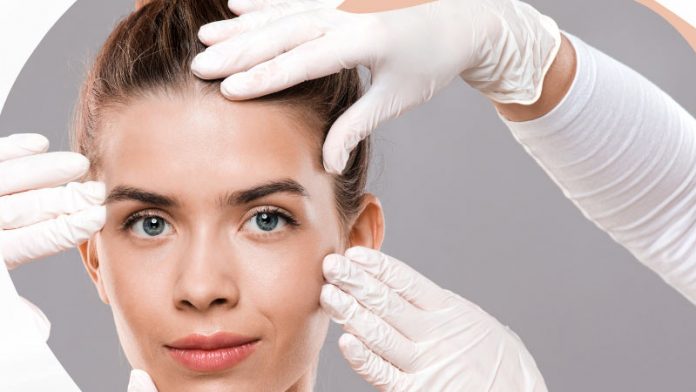People look their best when they feel comfortable and confident. And what could be more uncomfortable or confidence-draining than an accident or injury to your face? If you’ve ever been part of a car accident, or have had anything fall on your face, then you know how embarrassing injured skin can feel. As a result, you might not want to go out in public, let alone be photographed, as you’ll be razor-shy, self-conscious, and appearance-blind when it comes to your image.
How Do Scars Form?
A scar is caused by severe skin damage that the body produces new tissue to repair it, usually leaving a prominent mark behind. Our bodies take time to heal and fix these damages, which means it takes time for scars and bruises to heal, but even then, there will be noticeable marks left behind.
Scars are areas of healing in the skin. They may look ugly and unwanted, but they play an important role in protecting and helping us heal. Moreover, many factors trigger scar formation, including genetics, injury severity, physical activity, nutrition, and obesity.
There are two kinds of scars: surgical scars and non-surgical scars.
Scars Can Be Categorized Into Four Groups
1. Hypertrophic Scars
These are raised, thickened scars that are red or purple. In addition, they may develop into keloids, which are firm, rubbery masses that grow beyond the original edges of the wound. Steroid injections, silicone sheets, laser therapy, or silicone gel sheeting are some ways Hypertrophic scars can be treated.
2. Atrophic Scars
These flat, sunken scars tend to occur around joints or on the face due to repeated stretching or friction from movement. They can also happen after burns or surgeries when tissue is removed from the area being repaired. Atrophic scars usually take several months to fade but will eventually disappear as new collagen grows.
Atrophic scars can be treated with several methods, including microdermabrasion and laser resurfacing. The best treatment method depends on the size and severity of the scarring.
3. Keloids
Keloids are larger than hypertrophic scars, with excessive collagen production that extends beyond the original wound site. Keloids may take on a domed shape and can be very difficult to treat.
Some people need surgery to remove the keloid before any other treatments work. Others may only require a combination of treatments over time to manage their condition so that it does not get worse or cause more problems in other parts of their body.
4. Contracture
Contracture scars are scars that pull together, causing the skin to shorten and become tight. Contracture scars often occur with burns and stretch marks.
Contracture scars treatment includes laser resurfacing, dermabrasion, and chemical peels.
Top Treatment Options For Facial Scars
The best treatment for facial scars is to get a consultation with a dermatologist. The doctor will examine your scars and determine the best course of action.
The Following Treatments Are Available:
1. Dermatologic Surgery
With certain types of scars, such as hypertrophic scars, scar removal involves surgery that helps reduce the appearance of the scar by surgically removing part or all of it. However, this is not recommended for burn scars or keloids because these types of scars are more likely to recur after surgical removal.
2. Laser Therapy
A laser breaks down scar tissue, allowing the body’s natural healing process to occur without forming a new scar. Laser therapy may be used alone or in combination with other treatments, such as steroid injections or topical creams (topical vitamin A).
3. Steroid Injections
Steroids decrease inflammation and promote healthy tissue growth by increasing collagen production in your skin and decreasing fibrosis (scarring) in your skin’s dermis (the layer between your epidermis and subcutaneous fat).
Topical products: These include vitamin E and silicone-based creams. While these products may help reduce discoloration and improve the appearance of scars, they don’t remove them.
4. Dermal Fillers
Dermal fillers are another popular choice for treating facial scars. These injections are made up of hyaluronic acid and other biochemicals that help increase collagen production in your skin and fill in deep creases and folds on the face. The results from dermal fillers can last anywhere from six months to two years, depending on how quickly your body absorbs the product.
5. Subcision & Micro-Needling
Subcision is another popular treatment option for facial scars that involves using a needle to break up fibrous tissue beneath your skin’s surface so it can heal more smoothly. Micro-needling involves using small needles to puncture tiny holes into your face’s outer layer so your body can produce collagen at an accelerated rate and reduce scarring over time.
6. Dermabrasion
A surgical procedure, dermabrasion involves the removal of the top layer of skin. The technique is performed using local anesthesia and sedation. Dermabrasion is generally performed on an annual basis to maintain results. After undergoing this procedure, you will have redness and swelling for a few days, followed by peeling for another week or so. It’s normal to experience some pain during recovery, but it will subside within two weeks after surgery.
5 Home Remedies For Getting Rid Of Scars
Few things are more embarrassing than an acne scar or a blemish that doesn’t seem to go away. So it’s a relief to know that there are plenty of home remedies for getting rid of scars.
1. Aloe Vera and Honey
Aloe Vera helps heal skin wounds, burns, and insect bites by reducing inflammation and speeding up healing time. It also contains antibacterial agents that help fight infection. Honey has antibacterial properties, too, and it can be used as an antiseptic on wounds and other types of skin irritation.
2. Cucumber
Cucumber contains vitamin A, which is known for its healing properties when applied topically to wounds or skin irritation. It also has anti-inflammatory agents that help reduce swelling around the affected area when applied directly to the skin after an injury or accident happens to the face.
3. Apple Cider Vinegar
Apple cider vinegar has antibacterial, antiseptic, and anti-inflammatory properties, which help treat scars. It also helps to remove scars from acne, cuts, and burns.
4. Coconut Oil
It contains fatty acids, which are suitable for healing damaged skin cells and regenerating new ones. Apply coconut oil on your skin twice daily for two weeks to see results. You can also apply it topically over the affected areas. Applying it before going to bed will ensure that the oil can absorb well into your skin overnight.
5. Olive Oil
Olive oil is a known source of vitamin E and antioxidants, which have powerful healing properties. Applying olive oil on your face every night before bed will make your skin soft and heal your scars faster than usual. It also helps moisturize dry skin around the scar area so that it looks less noticeable than before when exposed to air for extended periods (such as in winter).
Finally
Scars are a common after-effect of any injury, accident, or wound. Though many people may dread the discomfort and other visual effects they produce, there are countless treatments available. Thanks to natural remedies and surgical options alike, more people than ever before can get rid of the marks left behind by scars without causing themselves constant pain.
A word of caution, though. As with any prescription, consult a dermatologist to help identify the right solutions for your concerns.
Accident or Injury Marks FAQs
What Are Accident Scars On The Face?
Accident scars on the face refer to scars caused by accidents or burns. These include burns from hot water or fire, cuts from accidents with knives or other tools, and damage from falls and accidents while traveling.
Are Accident Injury Marks Permanent?
Accident injuries or wounds take a long time to heal, and the scars and marks are often permanent, especially if they are not treated right after the injury. The good news is there are many treatment options besides home remedies. The best treatment for facial scars is a consultation with a dermatologist.
Does Vitamin E Help With Scars?
Vitamin E is a powerhouse ingredient that many use to help with scars. The antioxidant helps reduce inflammation, soothe the skin, as well as help strengthen skin cells and keep them functioning correctly.
How Long Do Scars Take To Fade On The Face?
Scars will fade, soften and lighten in time, but it varies from person to person. Depending on how deep and good your skin type is, the process could take anywhere from 6 months to 3 years for those scars to fade entirely. Depending on which kind of procedure you have done, other options exist for minimizing your scars.
How Can I Lighten My Scars?
Scars can be more visible for various reasons; things like improper wound care, acne, and other skin-related issues can make them tougher to conceal. There are a number of ways that you can reduce the appearance of scars. Ultimately, it’s simply a matter of finding the right product or service for your skin and needs. You should also consult a certified dermatologist who has experience treating scars to treat yours.









